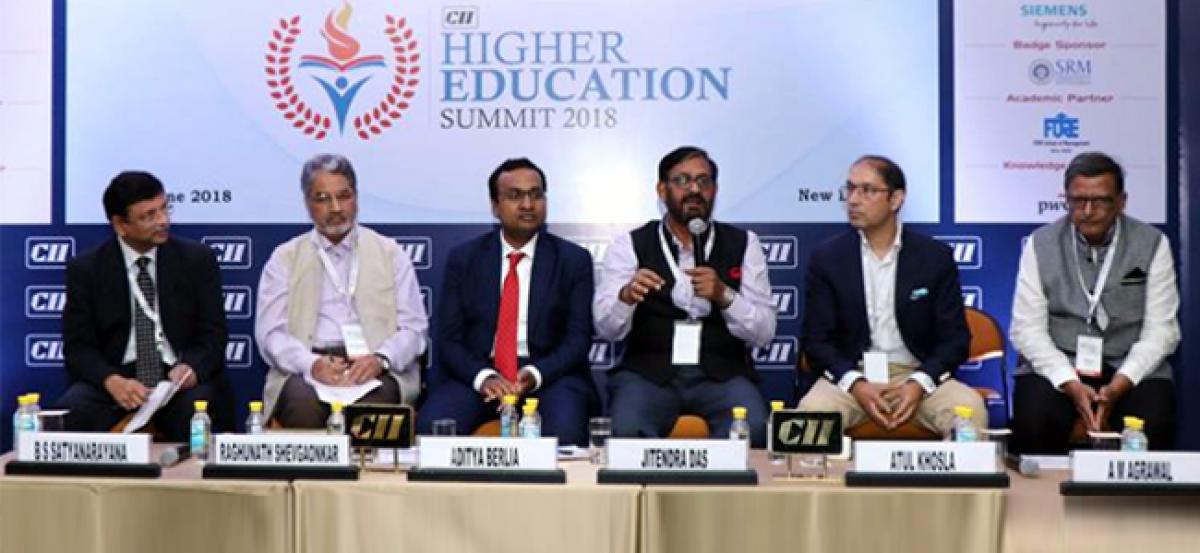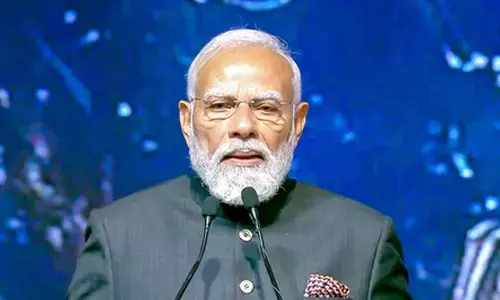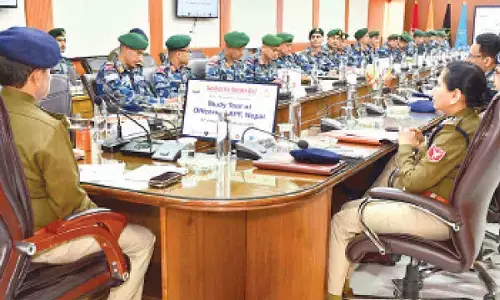Regulators should let the performers blossom and not try to squeeze them

At the recently held Higher Education Summit 2018 organized by Confederation of Indian Industry CII Delhi, speakers and delegates from some of the nations top education institutes deliberated and shared their thoughts on the future of higher education and challenges being faced by the academia
Dr. Jitendra K. Das at CII - Higher Education Summit 2018
At the recently held Higher Education Summit 2018 organized by Confederation of Indian Industry (CII) Delhi, speakers and delegates from some of the nation’s top education institutes deliberated and shared their thoughts on the future of higher education and challenges being faced by the academia.
Representing the regulators, also present on the occasion, were Dr. Manju Singh, Joint Secretary UGC, who set the context of the seminar as she stated that the expectations from Universities primarily are: A Good Learning Experience, Quality Placement, Industry-driven Professional Environment, Better student-faculty ratio and UG/PG/PhD ratio, International Exchange programs and collaborations. Prof. P. B. Sharma, Summit Chairman & Vice Chancellor, Amity University Gurugram and President, Association of Indian Universities, was quick to respond. He questioned the outcome of the laid down objectives in the absence of any tangible benchmarking system and said that in order to achieve the set of desired goals, instead of broad guidelines, an action-oriented guiding principle has to be in place.
Speaking on the occasion, Dr. Jitendra K. Das, Director, FORE School of Management, New Delhi and Chairperson of the session themed ‘Role of Regulators to support the growth of higher education and improve quality standards’ referred to the nine different types of regulatory bodies in the country with separate set of rules and regulations. “None of them have anything to do with the quality or growth of the institution, leave alone the market forces. Top-ranked Universities in the US and Canada have autonomous units for research grants independent of any regulations. Let the performers blossom instead of trying to catch them by the neck and squeeze them to death”, he said.
Deliberating on ‘Single Regulator vs Multiple Bodies’, Dr. Raghunath Shevgaonkar, VC, Bennett University said that as long as the policies are transparent and same for all, single or multiple, do not matter much. “Differential treatment is not right when output is same for all. Else by design, you are encouraging inefficiency. ‘Efficiency – Delivery – capacity building’ cannot be compromised upon”, added Dr. Jitendra K. Das.
Dr. Atul Khosla, Pro Vice-Chancellor and Founder, Shoolini University pointed out how the regulations and set of rules do not touch around 40% of the deliverables of the ‘business model’ or the outcome based objectives of the academia.
Mr. Aditya Berlia, Co-Founder and Pro-Chancellor, ApeeJay Stya University, said, “The major philosophical difference in the regulatory bodies compared to the developed countries is that while they are ready to provide all support and hand-hold the academic institutes till they reach the desired level in terms of deliverables, in India the mentality is of that of ‘gate-keeping’ which is essentially pulling the system downwards”.
Dr. A. M. Agrawal, Pro Vice-Chancellor, GLA University, pointed out the dearth of quality research initiatives and a dismal number of research papers, said, “When Private Universities are working six months for admissions and rest six for placements, where is the time for anything else.”
Dr. B. S. Satyanarayana, VC, BML Munjal University, said, “Innovation and adaptation is something the regulators should be looking into”.
Responding to a view as to why Indian Universities were being compared to US Universities where ‘legacies run for 100s of years’, Dr. Das citing examples of Universities in China, Hong Kong and Singapore which find place in the top ranking university lists, despite the fact that reforms in education started taking place there much later as compared to India, said, “Regulators need to understand what US, Singapore or China is doing that India isn’t doing”.
Dr. Renu Luthra, VC, Galgotias University opened the next session on How to collaborate with industry players; need for upgrading curriculum and forging research partnership along with co-panelists – Dr. Indira Bharadwaj, Chairperson PGDM and Admissions at Delhi Business School; Vishal Sood, Executive Director, Maharishi Markendeshwar University; Dr. Ajay K Jain, Director at IMS Ghaziabad and Dr. Vikas Madhukar, Director Amity University; Dr. Dayanand Pandey, Director, Jaipuria Institute of Management; Dr. Chandan Chowdhury, Associate Dean at Indian School of Business.
Addressing ‘Skill gaps for employability leveraging technology’, Dr. Luthra mentioned if opportunities like ‘e-internships’ could be made available to the students on a wider scale. Vishal Sood said, “Focus should be on growth, development, and outcome-based learning”. Echoing similar sentiments, Dr. Indira Bharadwaj stated, “In order to make the outcome based education process measurable, industry guidelines should be laid down as benchmarks and standards, which further should be mapped to assessment models and evaluation matrix by institutes”.




